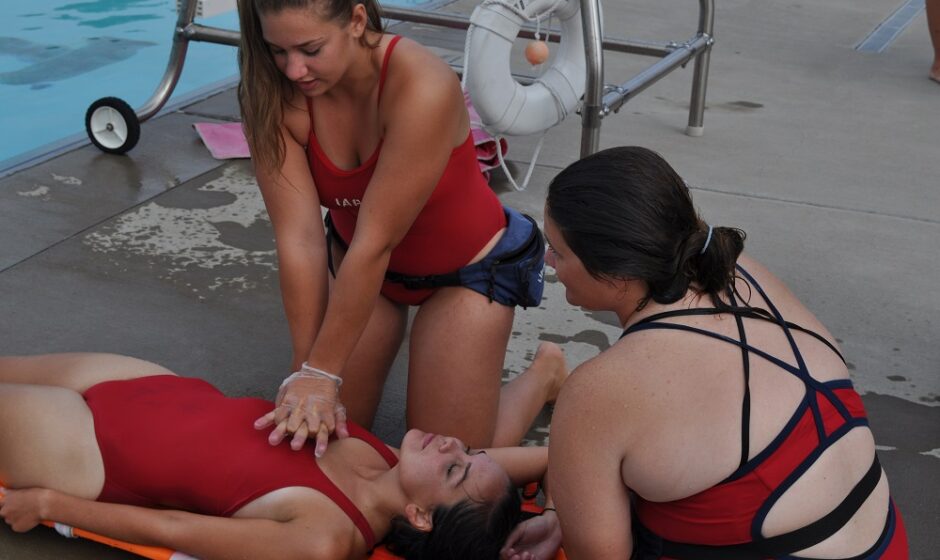Becoming a certified lifeguard is a rewarding and respected career path that combines physical fitness with critical life-saving skills. Whether you’re looking to work at a pool, beach, or waterpark, obtaining your lifeguard certification quickly and efficiently can help you seize job opportunities faster.
This article breaks down how to get lifeguard certified fast, including the best programs, practical tips, and a breakdown of costs in the United States. It’s written in a clear and professional tone, designed to help you make informed decisions based on credibility and facts.
1. Understand the Basic Requirements
Before enrolling in any lifeguard certification program, it’s crucial to understand the minimum requirements set across most institutions in the USA:
- Minimum age: Typically 15 years or older
- Swimming skills: Ability to swim 300 yards continuously using front crawl and breaststroke
- Physical tests: Retrieval of a 10-lb object from 7–10 feet depth and treading water for 2 minutes
- CPR/First Aid training: Usually included or required as part of the course
Tip: Brush up on your swimming endurance and technique before enrolling to ensure you pass the physical prerequisites quickly.
2. Choose the Right Lifeguard Certification Program
Several nationally recognized programs offer lifeguard certification. To get certified fast, choose one that offers flexible scheduling or blended learning (online + in-person training).
Common Lifeguard Certification Types:
- Shallow Water Lifeguard (for pools less than 5 feet deep)
- Deep Water Lifeguard (standard certification)
- Waterfront Lifeguard (for lakes, beaches)
- Waterpark Lifeguard (for specialized aquatic facilities)
What to Look For in a Program:
- Accredited curriculum (recognized by health and safety departments)
- Experienced instructors with rescue and medical training backgrounds
- Fast-track options or weekend intensives
- Certification valid nationwide
3. Consider Blended Learning Options
Blended learning is one of the fastest ways to get lifeguard certified. It allows you to complete theory modules online at your own pace, followed by 1-2 days of hands-on training.
Benefits of Blended Learning:
- Saves time compared to traditional full-week courses
- Allows you to study and test your knowledge online
- Perfect for those with busy schedules or prior commitments
Tip: Be sure to complete all online modules before your in-person sessions to avoid delays in certification.
4. Prepare for the Physical Skills Test
One of the biggest hurdles in lifeguard certification is the practical swimming test. Preparing ahead can ensure you don’t have to repeat the course or delay your certification.
Key Skills to Practice:
- Timed 300-yard swim
- Brick retrieval from deep water
- Treading water with hands out for 2 minutes
- Rescue techniques and backboarding
Tip: If you struggle with any skill, consider a pre-certification swim clinic or private lessons to boost your confidence and ability.
5. Understand the Timeframe for Certification
Lifeguard certification can be completed in as little as 2–3 days for accelerated programs, or over a week for traditional ones. Here’s a rough guide:
| Program Type | Duration |
|---|---|
| Full In-Person Course | 3–5 days |
| Blended Learning Course | 1–2 days in-person (after online modules) |
| Weekend Intensive Course | 2 full days |
| Recertification Course | 1 day |
Tip: If you need to get certified quickly for a job, search for programs with same-weekend availability.
6. Compare the Costs of Lifeguard Certification
Cost is a factor for many aspiring lifeguards. Lifeguard certification prices in the USA vary depending on the format, location, and included materials.
Average Cost Breakdown:
- Full Certification (In-Person): $200–$400
- Blended Course: $150–$300
- Recertification: $100–$200
- CPR/First Aid (if separate): $40–$80
Note: Some programs include manuals, CPR masks, and certification cards, while others charge extra—so always read the fine print.
7. Check Certification Validity and Renewal
Once certified, your lifeguard credentials are usually valid for two years. It’s important to renew before expiration to avoid having to retake the full course.
Renewal Tips:
- Take a recertification course 1–2 months before your certification expires
- Stay physically prepared throughout the year to avoid failing practical skills
- Keep your CPR/First Aid certification updated—it may be required separately
8. Apply Early and Book Ahead
Lifeguard classes, especially fast-track and weekend options, fill up quickly—particularly in spring and early summer.
Best Practices:
- Pre-register online as soon as you decide
- Look for group discounts or early-bird specials
- Have all required documentation ready (ID, swim test waiver, medical forms)
Tip: Contact instructors or centers directly if you need urgent certification—they may offer private or expedited options.
9. Keep Learning After Certification
Getting certified is just the beginning. Staying updated with the latest rescue techniques, first aid updates, and emergency response protocols is key to remaining a top-notch lifeguard.
Continuing Education Opportunities:
- Advanced rescue workshops
- Emergency oxygen administration courses
- Leadership and supervision training
- Aquatic facility operator (AFO) certifications
Final Thoughts
Getting lifeguard certified fast is entirely possible with the right planning and preparation. Whether you choose a weekend-intensive or a blended course, make sure it’s nationally recognized, meets safety standards, and fits your schedule and budget.
By understanding the requirements, practicing key skills, and selecting a reputable program, you can be job-ready in just a few days—well-prepared to protect lives and make a meaningful impact.



